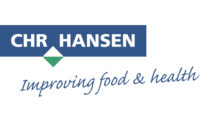Fortna and MHS Global now known as a single company, FORTNA
The company poised to deliver transformative omnichannel and parcel distribution solutions.

The merger of MHS Global (“MHS”), a leading global provider of material handling automation and systems integration, and Fortna (“FORTNA”), a leading software and solutions provider for warehouse distribution, has resulted in a single combined entity that will be known, henceforth, as FORTNA.
The companies bring together decades of experience in the design, development and delivery of omnichannel and parcel distribution solutions, offering customers a uniquely versatile end-to-end path forward to optimize operations in the face of continual upheaval.
FORTNA says it enters the market with the size, scale and capabilities of a global leader in the category. In a world where increasing consumer demands continually face off with supply chain disruption and other challenges, the newly combined FORTNA offers customers partnership and solutions they can count on to outpace the demands of tomorrow.
The decision to retain the legacy Fortna name was the result of careful consideration. "The name FORTNA was selected not only for the great reputation the name already has in the market, but because of the strength and resilience embedded within it,” explains FORTNA CEO Rob McKeel. “The notion of fortitude. Of resilience and strength. It speaks to what our customers need in today’s climate and what they can expect from our partnership – the ability to weather the ever-changing market conditions and come out thriving.”
Customers will increasingly see the new FORTNA brand as it is rolled out globally over the coming weeks and months. Alongside the new brand identity, customers will access the advanced performance unlocked by the combined capabilities of two industry leading omnichannel and parcel distribution solutions providers.
“At the end of the day, our customers need to know they are ready for anything. That means operations that run at the speed of change – and the intelligence to anticipate what is next,” McKeel concludes. “We are thrilled to be able to provide the ability for our customers to create scalable, cost-efficient operations through automation.”
Looking for a reprint of this article?
From high-res PDFs to custom plaques, order your copy today!





